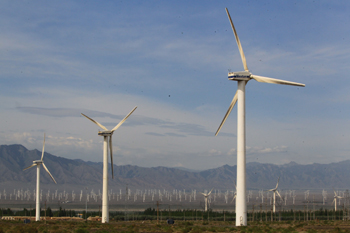
The world is changing fast as Asia continues to surge ahead. In less than two generations, the Republic of Korea has gone from being one of the poorest countries in the world to one of the richest and a global leader in technology and manufacturing. The People’s Republic of China (PRC) is set to become the largest economy in the world in 2014. In Viet Nam, 15-year-olds are performing above OECD average in education.1 Under the new leadership of India’s Prime Minister Narendra Modi, India will aim for the skies.
Half of the world’s population lives in Asia and the Asian Development Bank (ADB)2 has estimated that the region will account for 50% of the world’s economic activity by 2050. This would lead to a radical change in economic power. But in historical terms, this is really a return to the normal state of global affairs. For most of world history, up to around 1800, Asia was at the center and Europe on the periphery.
The world will be more just and better off as a result of the rise of Asia. But this tremendous Asian growth will also put immense stress on the environment. Air and water are being polluted and many habitats of plants and animals are being destroyed as a result of rapid growth. Our energy system is causing destructive climate change while as many as 1.3 billion people in the world have no access to electric power and 40% use firewood and charcoal for cooking and heating. Eradicating poverty on the current growth pattern would require several planets. Sustainable growth will require an entirely new, green growth model.
Asia’s efforts for green growth
Asia is stepping up to these enormous challenges and signaling the political will to go green. The PRC has publicly stated its determination to build an ecological civilization where economic growth and environmental protection go hand in hand. The PRC is a global leader in renewable energy investment and about half of its new electricity3 comes from wind, solar, and other green sources. The ministry of environmental protection has been provided with stronger powers to curb air pollution. I was present when Indonesian President Susilo Bambang Yudhoyono told his government and the entire Jakarta business community that he had promised his grandchild that he would be the Indonesian president that would put a stop to deforestation. Indonesia is making great progress in halting deforestation while Viet Nam and the Philippines have stopped deforestation completely. It was a great sign of progress when Wilmar, Asia’s largest producer of palm oil, in 2013 committed to a no deforestation policy.4
The most recent good news was ADB’s announcement of the launch of the Sustainable Energy for All hub5 to mobilize investments and bring clean energy to the Asia and Pacific region. Asia surely has the political will, technological skills, and manufacturing capabilities to provide clean energy to the region. But sustainable energy for all is a global challenge, and the OECD can help mobilize resources and advice on effective policies.
The International Energy Agency estimates that the Asia and Pacific region will need more than $200 billion in investment to provide full access to energy. Most of the money will have to come from private investments. More than three-quarters of global foreign direct investments originates in OECD countries.6 Development assistance can mobilize more private investments by mitigating risk. The OECD Development Assistance Committee, which I lead, is mobilizing more and better financing for development.7
OECD’s recommendations for green growth and development
OECD countries and developing countries will need to go green if the development gains made to date are not to be halted or reversed by climate change and the destruction of ecosystems. Learning from success and doing more of what works is the best policy. The forthcoming OECD report Toward Green Growth in Southeast Asia8 will provide tailored advice and recommendations on green growth and development based on what has worked in the region. For example, in Cambodia,9 the National Green Growth Roadmap sets an ambitious series of goals and laws to encourage inclusive green growth. Cambodian authorities are exploring how to use hydroelectric power to increase their electricity supply and reduce the high cost of electricity, as electricity in Cambodia is among the most expensive in the world.
The doomsayers say the Asian miracle will end and that growth cannot last forever. Every year since 1978 when the PRC started surging ahead, professors and experts have predicted the end of the Asian miracle. Others say that climate change is inevitable and that any effort to reduce carbon emissions will be too costly. However, there is good reason to believe that the naysayers are wrong and that the Asian century can be good for people as well as the environment. Has the time come for optimism and action?
_____
1 PISA 2012 Results. PISA 2012 assesses the competencies of 15-year-olds in reading, mathematics and science in 65 countries and economies.
2 ADB. Asia 2050: Realizing the Asian Century. 2011. Manila
3 New Scientist. 2014. Almost Half of New Electricity Is Now Clean and Green.
4 Greenpeace blog post. 2013. Palm Oil Giant Commits to No Deforestation.
5 ADB to Host New Hub to Bring Investment and Innovation in Clean Energy in Asia.
6 OECD. 2013. FDI in Figures is a timely and reliable source of information on recent global FDI trends.
7 OECD. 2014. External Financing for Development.
8 OECD. 2014. Toward Green Growth in Southeast Asia.
9 OECD. 2013. Making Growth Green and Inclusive: The Case of Cambodia.







Comments are closed.